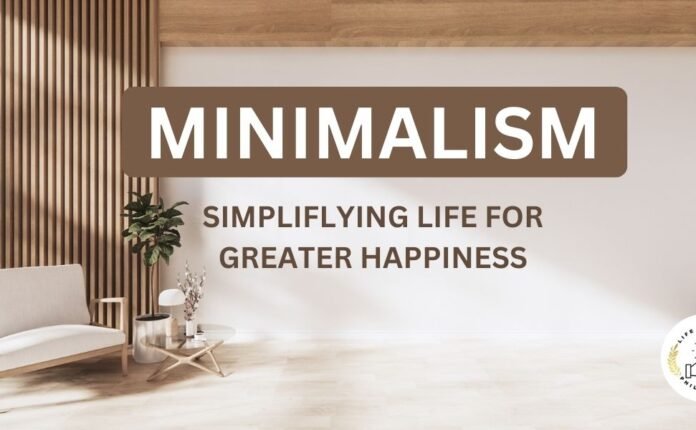Our world is incredibly interconnected today, and our devices, including smartphones, laptops, tablets, and smartwatches, are practically appendages of ourselves. Our devices keep us plugged in 24 hours a day. Though technically advanced devices can be beneficial, too often they contribute negatively to our mental wellness, ability to focus, and overall well-being. Digital minimalism is a philosophy and practice that asks us to practice regaining our attention and forcing intention instead of compulsion when using technology.
You might feel you are spending too much time scrolling through social media, notifications on your phone, or other mindlessness of content. But you are not alone! The good news is that with a little effort and understanding of digital minimalism, you can cut screen time down realistically by 50% or more. Here’s how.
What Exactly Is Digital Minimalism?
Digital minimalism is a conscious way of living articulated by writer Cal Newport in his book called Digital Minimalism: Choosing a Focused Life in a Noisy World. Digital minimalism relies on the use of technology intentionally, in ways that align with your values and priorities.
While most of us are automatically reacting to the pings of our devices and the endless feeds of information, digital minimalists are being more conscious and are choosing activities that are meaningful to them, both online and offline.
The Problems with Excessive Screen Time
In order to create alternatives for less screen time, we first need to understand the harms of excessive screen time:
- Mental health problems: High screen time is correlated with anxiety, depression and sleep issues.
- Distracted focus: Constant notifications break up your attention and make it difficult to do deep work.
- Physical health problems: Long hours of sitting and screens lead to poor posture, eye strain and sedentary lifestyle disease.
- Looser relationships: More time in online interactions usually comes at the expense of real-life face-to-face connections.
5 Steps to Cut Your Screen Time Down by 50%
1. Audit Your Digital Life
The first step is to track your screen time now. Most smartphones have screen time reports that track this or apps do (e.g., Screen Time for iOS or Digital Wellbeing for Android). Make a note of the following:
- Total screen time per day
- Most used apps
- Number of daily picks and notifications
This number will provide a baseline for understanding your behavior and help you make realistic goals for reduction.
2. Define Your Values and Priorities
You can ask yourself, What do I value most?
It may be a desire to spend more time with family, spend time on a hobby, or work on something related to health. Clarifying the things that are important to you will help you see what social media activities are in line with your goals and the distractions and waste of time.
3. Declutter Your Digital Space
Just as cleaning up our physical home is important when trying to replace a habit, so is decluttering our digital environment.
- Get rid of apps you don’t use.
- Unfollow accounts or unsubscribe from email lists that do not support you in your values.
- Make your home screen lists so that only apps you use everyday are visible.
4. Create Tech-Free Zones and Times
Identify certain times or places for tech-free zones, e.g.:
- During meals
- One hour before sleep
- First hour after wake-up
- In the bedroom or bathroom
Tech-free boundaries promote mindfulness while reducing the impulse to check in mindlessly.
5. Batch Your Digital Tasks
Rather than continually attending to emails, texts, social media, etc., designate times to check and respond, e.g.:
- Check email twice a day (e.g., at 10AM and 4PM).
- Respond to texts and voicemails at lunch and after work.
Doing this limits context-switching and helps you stay focused in the present.
6. Turn Off Non-Essential Notifications
Notifications are engineered to hijack your brain. Turn off all notifications except for the extremely important. Most people find they really only need calls, calendar notifications, and perhaps texting and messenger notifications.
7. Get Engaged with Alternate Activities
Once you’ve determined your use level and cut back, you will suddenly have some extra hours. You can fill those hours with activities that feed your mind and soul:
- Read print books
- Exercise
- Prepare a new recipe
- You can take a walk in nature
- You can journal or meditate
- You can spend time with family and friends.
You’ll find it’s easier to keep ths digital consumption low since you can fill it with meaningful experiences.
8. Use Technology to Limit Technology
Also, there are apps that can help you manage usage, including:
- Freedom: Helps you block distracting websites and apps across devices.
- Forest: A concept where a virtual tree grows to represent your reduced phone time.
- Focus Mode (built in on Android) or Downtime (on iOS): These features allow you to turn off specific apps for a period of time.
9. Do a Digital Declutter Challenge
Newport recommends doing a 30-day digital declutter: remove all digital tools that are non-essential, for 30 days. After the month, reintroduce digital tools with the case that each tool genuinely adds value in some way. Even a week of taking away digital tools gives you the time to reset your habits, while seeing just what you miss most in that time.
Advantages Of Reducing Your Screen Time
When you reduce or eliminate around half of your screen time, your likely will notice:
- A marked increase in your focus and productivity
- Improved quality of sleep
- Fewer levels of stress and anxiety
- Enriched personal connections
- More personal time for passions or hobbies
In Conclusion
Digital minimalism isn’t necessarily rejecting technology if you use it intentionally to support the life you want. By auditing and rearranging your usage, decluttering your digital space, creating boundaries, and seeking other options, you can actually reduce your screen time by at least 50%.
And what’s the outcome of reducing screen time in your life? You will experience a calmer mind, a more meaningful daily experience, and a deeper sense of control over your life.
Go ahead and take the first step now. Your future self will be thrilled!



